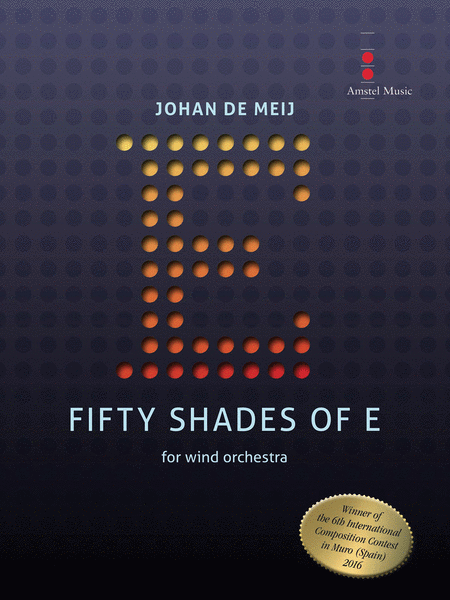Fifty Shades of E
for Wind Orchestra
-
Ships in 24 hours
Details
Description
SKU: HL.4005094
For Wind Orchestra. Composed by Johan De Meij. Amstel Music. Concert Music. Softcover. Composed 2017. Amstel Music #AM131-010. Published by Amstel Music (HL.4005094).UPC: 888680677671. 10.75x14 inches. English-German-French-Dutch.
“Fifty Shades of E is a musical expedition to discover the myriad nuances of the note E. Throughout the work, the E keeps one foot on center stage while venturing out through various movements. From its basic tonal functions to when it shimmers under a lyrical guise, the E is seen, heard and experienced from every aural angle. After a short, mysterious introduction in the low brass and percussion, a straightforward unison chorale melody is played by the entire ensemble (measure 11). This thematic subject will only emerge fully at the end of the work (m.355). The subsequent fugue on the chorale theme begins in the bass register (m.25), and gradually soars via superimposed fifths within the whole orchestra. At the same time, the tonal idiom becomes more and more unruly. The various groups reunite in a massive rhythmic unison (m. 107), which lands in E major. The melodic percussion and piano continue by playfully engaging the E, using minimalistic, repeating patterns with skittish, consonant additions (m. 117). The chorale theme soon emerges in four different rhythmic and melodic passages in – successively – trombones, horns, saxophones and clarinets. With deliberation, the rhythmic pattern grinds slowly to a halt. In a free cadenza, six solo woodwinds break the mood by visiting and embellishing the main theme, one after another, from high to low. Before measure 207, the baritone sax lingers on its own: its cadenza forms the bridge to the capricious Allegro agitato (m. 207), interspersed with staccato motions and hammering strikes. After a quasi-Beethovian sequence (m. 307-354) leading to the main theme in a minor key (m. 355), a radiant conclusion follows – inevitably – into a sounding unison E over seven octaves.” –Johann de Meij.

 Share
Share